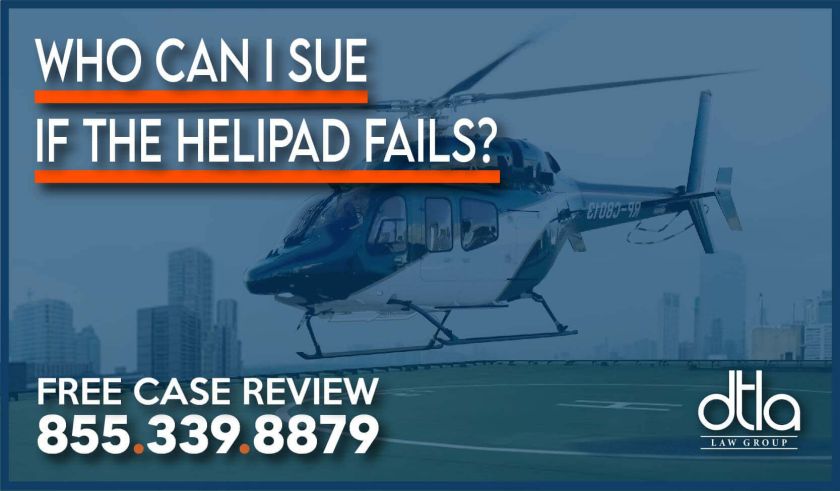Who Can I Sue If the Helipad Fails?
A helicopter must land on a helicopter pad or helipad, or at a heliport, or it can land at an alternate location if it can do so safely. In urban areas, many people have permanent helipads on their property or on a rooftop where they own the building. Any
For example, Uber Copter frequently books helicopter trips between Manhattan and JFK International Airport. This includes a ride on an Uber vehicle, that takes the parties to the airport as well. It is possible to get a ride for a pick up and drop off in Brooklyn, New York too. These services are booked using the Uber app on a person’s smartphone, where the availability and pricing are shown on the Uber Copter app. The Uber Copter uses a helipad in urban areas to make a landing to pick up passengers. These locations can include rooftop helipad venues.
A Rooftop Helipad Must Meet FAA Requirements for SafetyA helipad that is located on an urban roof must meet the Federal Aviation Administration or FAA code regulations for safety. That means that a helipad must have unrestricted access for the helicopter to land without being hampered by trees, new developments, buildings or vehicle traffic. Helipads are specific areas on a rooftop that a helicopter can safely land. The helipad is not going to just be an area on a rooftop with a large circle painted on it. No, there are highly specific regulations regarding where a safe helipad can and cannot be located.
Requirements for a Helipad on a Rooftop or Ground LandingA helipad on a rooftop or a ground structure need to be safe for the helicopter to land properly. The size of the helicopter, the weight, length, width and dimensions of the helicopter to land on the helipad need to be taken into consideration before a helipad is built. Ground helipads should not be constructed with asphalt, but rather need to be built of concrete and steel. There are weight bearing issues and obstruction clearances that need to be considered with a rooftop helipad.
Helipads have highly specific requirements and safety regulation guidelines for the final approach and takeoff areas (FATO, and the touch down or helipad sizes (TLOF), to allow safe passage on the helipad by the helicopters using those helipads. For example, according to the FAA, the helipad may need to have at least one approach and one departure flight path to the helipad. These paths need to be aligned with the prevailing winds, to allow the helicopter to take off and land into the wind. This will help prevent issues with the helicopter flight.
Helicopter Main and Tail Rotors Are Inherently Dangerous for Passengers on a HelicopterThere can be issues with the main and tail rotors on a helicopter. The pilot needs to give special attention and care when going in to taxi near a hangar, wires or other obstructions nearby to the helipad when landing and taking off in a helicopter. Often, the obstructions can be difficult to judge where they are, and this can make for a dangerous situation in a helicopter. If the pilot has to hover backwards or forwards, there needs to be extra room for the clearance of the tail rotor.
A helicopter creates a large amount of thrust or wind when it takes off and lands. It can blow sand, dust, snow, ice, debris or ever water at super high and unexpected velocities when landing and taking off of a helipad. People nearby to a helicopter when it is taking off or landing can be injured by lose objects such as soil, rocks or other debris from the helicopter rotor blades.
The pilot of a helicopter has to review all master minimum equipment lists (MMELs) for the appropriate and proper helicopter usage and operations. The FAA Flight Standards need to be reviewed on a regular basis, as well as the operations and maintenance (O&M) procedures for lifting off and landing the helicopter. If the pilot finds an inoperative condition on the helicopter, then the pilot has to record this discrepancy. If the issue needs to be repaired, it will ground the helicopter. If the flight can continue, then the pilot will act accordingly to procedures to keep the helicopter safe during a flight.
For example, if the position lights were inoperative or not working properly, the pilot will make a record in the maintenance manual, and if the minimum equipment list or MEL allows it, will leave the position lights in the off position, open the circuit breaker, and placard the position light switch as “inoperative” for the flight.
$1.96 Million
$1.4 MIllion
$600,000
$825,000
$500,000
$460,000
$420,000
$525,000
If a helicopter needs fuel, it usually is off and cooled down to accept the fuel safely. The helipad can fail during hot refueling of a helicopter. In some extreme cases the pilot can allow “hot refueling” for when the blades are turning on the helicopter while it is getting fueled. This procedure can occur when the pilot is in a hurry to leave a helipad.
When hot refueling, the pilot needs to stay at the flight controls, and the person refueling needs to understand the proper procedures for that helicopter make and model needs. The pilot needs to stay at the flight controls during hot refueling, in order to be ready to immediately turn off all engines if there is a safety issue that arises during the refueling process.
Quick Turnarounds on the Helipad Can Be Hazardous for Pilots and for Passengers in a HelicopterIt is true that pilots who carry passengers to and from helipads to airports are interested in quick turnaround times while on the ground. The helipad can fail during a quick turnaround procedure by a helicopter pilot using a helipad. When that happens, that quick turnaround may come with a steep price, it may make the helipad more susceptible to collapsing or failing for another reason.
For example, if the helicopter is acting like an air taxi, then of course it follows that the sooner the passengers disembark and new passengers enter the helicopter, the sooner the helicopter pilot can make some more money. Any time that the helicopter pilot is rushing passengers to enter or exit the helicopter during a booked flight, there is a chance that there can be an accident on a failed helipad.
A Helipad Can Fail with a Giant Gust of Wind or Unexpected Uplift Affecting the HelicopterIf the helipad fails, or there is a giant wind gust that hits the helicopter, that wind can push the rotor disk and the helicopter can unexpectedly move. Another problem can be that the flight control system can accidently move causing an unexpected lift that is preemptively generated by the onboard running rotor system. If this does happen, the helicopter can roll, pitch, move, jut forward, or cause the rotor blade to strike the tail boom, or even to hit the ground.
Any time that there is a helipad failure on a rooftop area helipad, that failure can take down an entire helicopter that has landed on that helipad. This can pose a serious and grave risk to the passengers of the helicopter. If the helicopter passengers are entering or exiting the helicopter when the helipad fails, it can cause serous injuries to all of the passengers, or even death.
Yes, you can bring a lawsuit if you suffer personal injuries from a helipad that fails. You are able to bring an action against the owner of the helipad if it fails causing you personal injuries. If you are injured because of stepping onto a failure on a helipad, we want to talk to you. We are here to assure you that your claim is managed by the best lawyers in Los Angeles.
When you call us, our Los Angeles case lawyers can file a lawsuit for the responsible parties to a helipad failure that causes you serious personal injuries. Just put in a quick call to our case attorneys in Los Angeles, who can sue for you in this case when a helipad fails and causes you personal injuries.
Zero Fee GuaranteeWe offer to you a zero-fee guarantee. This means that we don’t get paid one thin dime until you do at the end of the settlement for your claim. That is about as easy as it gets! Just call us today.
Free Second OpinionYou can call us any time for a free second opinion. You have the right to talk to anyone who you prefer on your case. It is just as easy to call us to discuss your case, to ensure that you are going into a lawsuit situation with the best possible advantage. Call us today, we are here to discuss your case with you now.
Call for a Free ConsultationYou can feel comfortable calling us for a free consultation any time. We are here to advise you of what to do next on your claim for who to being a lawsuit against if a helipad fails. Call now, we are ready to help you on this claim.
Other Pages on Our Website Related to This Topic
Helipad Collapse Attorney
Helipad Lack of Lighting and Defect
Wisk Accident Attorney
Over $1 BILLION Recovered
for Our Clients
YOU Deserve the Best
Free Case Review 24/7
You Don’t Pay unless we win
Call (855) 339-8879
"*" indicates required fields
Featured Lawyers
Personal Injury
– Santa Clarita Personal Injury Lawyers
– Santa Barbara Personal Injury Attorneys
– Santa Maria Personal Injury Attorneys
– Redondo Beach Personal Injury Attorneys
– Rialto Personal Injury Attorneys
– San Marcos personal injury attorneys
– Rancho Cucamonga Personal Injury Lawyers
– Pomona Personal Injury Attorneys
– Redlands Personal Injury Lawyers
– Ontario personal injury lawyers
– Lake Elsinore Personal Injury Attorneys
– La Habra Personal Injury Lawyers
– Lakewood Personal Injury Lawyers
– Indio personal injury lawyers
– Irvine personal injury attorneys
– Glendale personal injury attorneys
– Highland personal injury attorneys
– Huntington Park personal injury lawyers
– Corona personal injury lawyers
– El Cajon personal injury attorneys
– Costa Mesa personal injury attorneys
– Compton personal injury lawyers
– Chino Personal Injury Attorneys
– Chula Vista Personal Injury Attorneys
– Baldwin Park Personal Injury Attorneys
– Bellflower Personal Injury Lawyers
– Anaheim personal injury lawyers
– Prisoner Personal Injury Attorney










